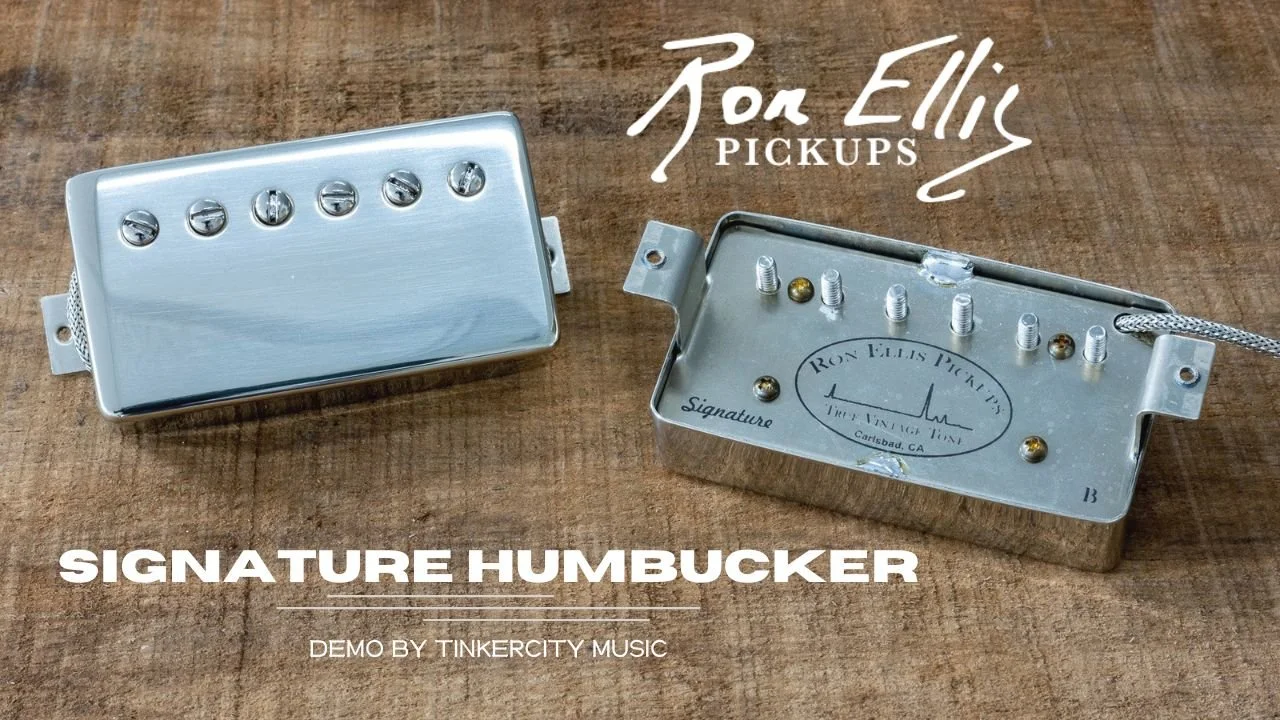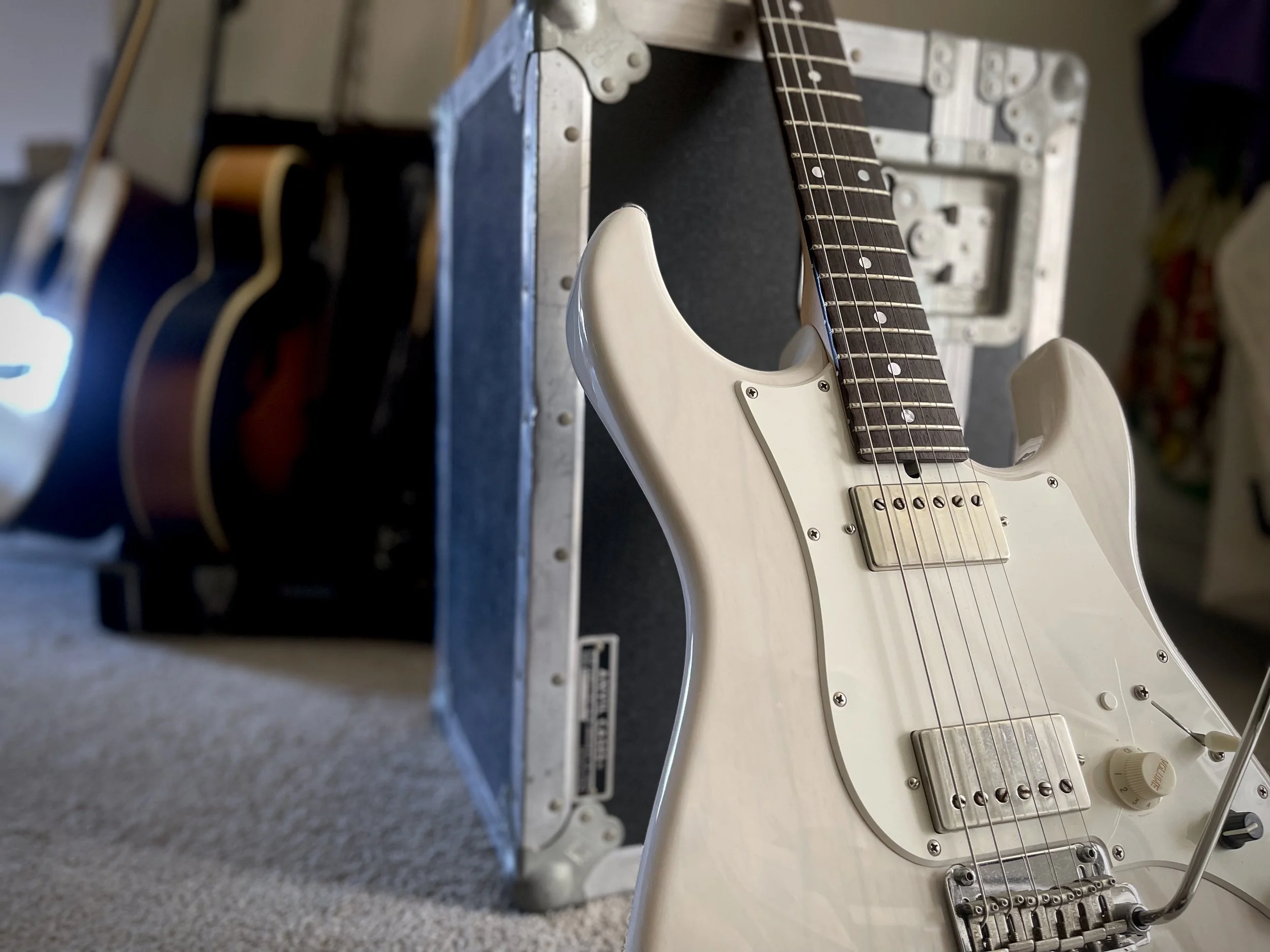Hello Gearheads! Welcome back to another grand adventure in the wondrous world of tone! Today I’ve got the repeated pleasure to share another set of incredible pickups from the master winder, Ron Ellis. This will be the 4th set of Ron’s pickups that I’ll have installed in my guitars and as with every single set I’ve installed… I’m never ceased to be amazed. To quote a good friend and fellow acolyte of Ron Ellis Pickups, Brett Moore… “They just sound right”. I couldn’t agree more. There’s always a fundamental element at work with Ron’s pickups, they just simply speak the music that’s yearning to come from your fingers and hands.
Today’s set I’m happy to share with you all is the Signature Humbucker. It’s essentially Ron’s amalgamation of everything he loves in a humbucking pickup. Elements taken from the best sounding PAF’s and the clarity you might expect and experience from a single coil pickup. They’re truly the “Goldilocks” of humbuckers and I think you’d be hard pressed not to enjoy them in every suitable guitar.
“The Signature set is Ron’s own recipe in creating the ultimate Humbucker style pickup. The set is a result of finding single-coil clarity in the humbucker format. The Signature set produces slightly less mid-range content, and clearly articulates both high and low notes to create a clean and melodic tonal signature.
The Signature set uses a unique recipe of materials to deliver the best of the best clear and articulate Patent Applied For sound and feel. It’s great for articulate playing and works well in combination with Telecaster, Stratocaster, and P90 pickups.
For clean and rich tonal response, the Signature set is the way to go.”
One of the key elements in this recipe (to me at least) is how clear and open these pickups sound. For that reason, I chose to install them in my James Tyler Retro Elite. I had originally purchased this instrument as a dual humbucker orientation and have been experimenting with pickup swaps since. Always yearning for pickups that would have the girth and fatness of my favorite PAF’s but have that all important clarity and snappiness to suit the Tyler’s lightweight ash body. The Signature set is exactly that. Rich and harmonically pursing with tone but not dull or blanketed in any way. The Signature set also responds very well to the treble bleed circuit I’ve got installed in the Tyler. Sometimes that might not be the case especially if a set is voiced more on that brighter side. That in a nutshell is what my ears are hearing - open and clear note definition without being bright or shrill.
I find the Signature Set to react equally well with clean and distorted signals as well as a wide variety of amp sources. They bring out the percussive quality of the Tyler and you can really feel every part of the guitar translated to the end source point. This is not an easy feat in any way, especially when considering how most PAF pickups tend to sound when put in a S Type body and scale length. They can often sound and feel like an odd fit that’s not quite Gibson and not quite Fender. The Signature Set just sound like the Tyler and my hands of course.
In the video demo below I used the Signature Set in my James Tyler Retro Elite on all the guitar parts through multiple amplifiers: Alessandro Red Bone Special, Divided By 13 FTR37 and in the solo section an amazing Magic Amplification Vibro Prince (briefly and graciously borrowed from Brett). All the amps responded incredibly to the pickups and you can really hear each piece of gear doing it’s part, nothing is homogenized… just the purest tone at your fingertips! I really love these pickups and am very glad to have them in this Tyler. They’re such a great match for the inherent tone of the instrument.
If it’s not obvious at this point, I’m a big fan of Ron Ellis Pickups and highly recommend them. They’re in my opinion, some of the best and most toneful pickup sets you can buy today. I truly have not found a set that hasn’t blown me away!
Thanks for checking this Gearheads Feature on the Signature Humbucker set from Ron Ellis Pickups. If you’d like to learn more about Ron and his work please do check out these sites for more information.
https://www.ronellispickups.com
https://www.instagram.com/ronellispickups/
https://www.facebook.com/ronellispickups
Until next time Gearheads, please take a moment to Like, Subscribe & Share this Feature and I’ll see you all very soon!
































































































